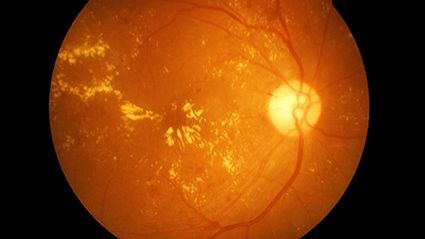WEDNESDAY, Jan. 27, 2021 (HealthDay News) — Greater exposure to fine ambient particulate matter with an aerodynamic diameter <2.5 µm (PM2.5) is associated with self-reported age-related macular degeneration (AMD) and with retinal layer thickness, according to a study published online Jan. 25 in the British Journal of Ophthalmology.
Sharon Y. L. Chua, Ph.D., from the University College London Institute of Ophthalmology, and colleagues examined the associations of air pollution (PM, nitrogen dioxide [NO2], and nitrogen oxides [NOx]) with self-reported AMD among 115,954 U.K. Biobank participants, aged 40 to 69 years.
The researchers found that people who were exposed to higher levels of PM2.5 had increased odds of self-reported AMD (odds ratio, 1.08), a thinner photoreceptor synaptic region, a thicker photoreceptor inner segment layer, and a thinner retinal pigment epithelium (RPE; ß = −0.16, 0.04, and −0.13 µm, respectively) after adjustment for covariates. Thicker photoreceptor inner and outer segment layers and a thinner RPE layer were seen in association with higher levels of PM2.5 absorbance and NO2. Higher levels of PM10 were associated with a thicker photoreceptor outer segment and thinner RPE; a thinner photoreceptor synaptic region was seen in association with higher exposure to NOx.
“It is possible that the structural features observed may be unrelated to AMD, but associated with pollution-induced retinal toxicity,” the authors write. “However, the direction of the relationships between air pollution and both AMD and associated retinal layer thicknesses indicate higher exposure to air pollution may make the cells more vulnerable and increase the risk of AMD.”
Several authors disclosed financial ties to pharmaceutical, health care, and other industries.
Copyright © 2020 HealthDay. All rights reserved.


